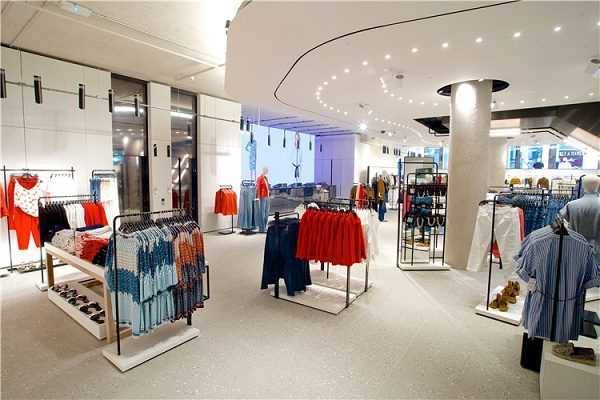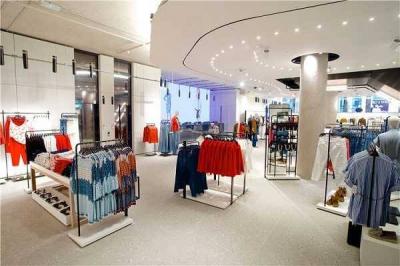Beirut, known for its fashion and elegance, has transformed into an "Outlet," and Lebanese men and women, famous for their good taste and pursuit of fashion and global brands, have become victims of the economic crisis that has plagued Lebanon for the past three years. Under the Fouad Chehab Bridge, which connects various areas of the capital to its luxurious neighborhoods, there was a small dilapidated shop displaying used clothes on outdoor platforms and above its doors. The sight of this small shop, with its large sign, was a stark contrast to the downtown and the luxurious stores in nearby upscale neighborhoods that emerged post-war, close to commercial complexes that have restored "the Mother of Cities" its elegance and vibrant fashion colors.
This small shop became a destination for workers from large workshops and the city's poor, which has become a tourist attraction and a fashion hub post-war. No one from the middle class ever imagined that their shopping destination would shift from malls and known brands to "Outlet" stores, which have begun to sprout across Lebanon like mushrooms. In the years leading up to the financial collapse, some clothing merchants discovered a new clothing market, specifically traveling to the United States to buy new clothes from clearance stores. America is famous for this type of merchandise sold at very low prices compared to their quality and the brands that have become available in Lebanon at bargain prices. As a result, shops specializing in this type of American clothing emerged in Beirut, the south, and Tripoli, associated with a specific group of traders known for importing this type of clothing. These stores saw significant popularity due to the acceptable cost of good quality clothes and recognizable names. Alongside these, other groups began importing used clothing but remained a minority with limited success.
Since the financial collapse, the retail clothing market has greatly expanded, with well-known stores increasing both the quality and quantity of their imported clearance clothing and opening new branches in areas traditionally known for their prestigious boutiques. As the price of the lira fell, the number of these shops increased, taking over entire buildings and spreading across various areas.
The retail clothing market divides into three types: the first being clearance clothing stores, where new clothes are sold at discounted prices due to general clearance or in Lebanon's context as "Sale," with very low prices shipped to "the land of the cedars" and sold at lower prices compared to well-known brands in Lebanon. These shops carefully select American brands for various occasions and also ship household necessities.
This type of store experiences an exceptional boom and customer influx compared to regular retail shops, despite their prices being in US dollars, as they remain cheaper than prices in other stores. The sources of imports for these shops were initially from the United States and later Europe, and currently, some traders ship Western goods from Arab countries known for their global brands located in their shopping complexes.
The second type includes imported but "used" or "bale" clothing, still in good condition and offered at low prices. This type has become increasingly popular over the past two years since the imported clothing brands are also well-known, expanding from the United States to Europe, particularly from London, Germany, and some less familiar countries in the Lebanese market.
The third and rapidly growing sector is what is called "Second Hand," which also includes previously used clothing from high-end global brands, predominantly French or Italian, along with other recognized brands comprising clothing, bags, and shoes. These items pique the interest of Lebanese women looking to own international brands but previously used, albeit of good quality. Most shop owners in this category are women working in fashion, trying to refresh, tailor, and organize the clothing needs and opening branches in less popular areas, especially since their customers prefer this type of clothing or bags at acceptable prices compared to new garments or bags imported from China or Turkey at similar prices. After the price of European clothing rose, the trend for importing clothes from Turkey or China at reasonable prices caught on among customers with lower incomes, although they generally do not possess sufficient quality or standards.
Among these models, there are groups of "cartel" traders specializing in buying and shipping these goods by sea, distributing them in well-known areas, establishing a self-sustained environment ensuring reasonable shipping prices and guaranteed continued goods arrival. Conversely, a new kind of purchasing has emerged on a "per kilo" basis, where customers buy, for example, ten kilograms of clothing for fifty dollars in a single bundle without knowing its contents, later selecting what they want.
Additionally, online retail clothing sales have recently gained traction. Traders in this segment seek to increase their monthly income, dealing with large traders to acquire specific pieces for sale through electronic pages. These pages reduce costs for customers by saving travel expenses, parking fees, and providing goods delivered to their homes at reasonable prices. This trade has proliferated through well-known electronic pages, and retail shops have also started using e-commerce to expand into new customer markets.
Recently, retail sales have begun to expand from clothing to household and electrical appliances from European countries like Germany and Northern Europe, where semi-new household electrical items are sold at acceptable prices compared to currently traded prices, especially with the rising dollar rate.
During this time of year, as the Christmas and New Year holidays approach, increasing gift and new clothing purchases, the activity of these shops multiplies. Lebanese people are fond of fashion and attempt to counter the economic collapse by purchasing what is available to maintain the bare essentials of living stylishly. However, it is undoubtedly a new scene for Lebanese people unaccustomed to this trend, and it seems likely to continue as the lira's collapse intensifies.




